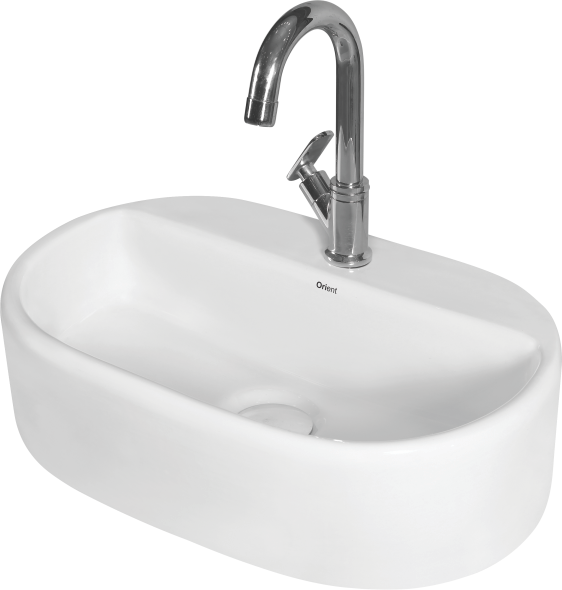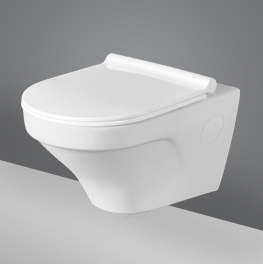
The importance of international standards and digitalization in the global ceramic sanitary ware market can't be overemphasized. However, there are some key challenges when it comes to the cost of crawling defects. If crawling defects are not eliminated, they will be a major price challenge in the global ceramic sanitary ware market.
Global Ceramic Sanitary Ware Market
The ceramic sanitary ware market was estimated at $35,544.8 million in 2020 and is expected to grow at a CAGR of 7.2% over the next five years. In addition, this market is primarily driven by the sanitary ware industry in the third world. In the past, the process used to produce these sanitary wares was more manual and reliant on supplier support. In recent years, however, advances in digital manufacturing technology have allowed ceramic sanitary ware manufacturers to automate the production process and produce high-quality sanitary wares without a technical staff.

Importance of International Standards for Sanitary Wares
In the context of sanitary wares, the international standards are designed to provide a consistent and reliable standard for the manufacturing of these products. These products are generally white, since they are made of clays with low iron oxide content, which give them a light colour after sintering. A crucial fluxing material used in sanitary wares is feldspar, which promotes a liquid phase within the microstructure, which results in a densification process. It is important to note that this material has a major role to play in the fundamental reactions of traditional ceramics. In particular, it influences the equilibrium between feldspar and mullite, two minerals that are important to sanitary wares.
Inverse Engineering in Ceramic Sanitary Wares
The waste of ceramic sanitary wares can be easily separated from other construction materials. There is no need to worry about impurities such as adhered cement and gypsum, as the waste of ceramic sanitary wares is completely devoid of these substances. Additionally, the waste does not contain any metallic reinforcements. Therefore, inverting the manufacturing process for ceramic sanitary wares can help the construction industry reduce its carbon footprint.
The water-permeability of ceramic sanitary wares depends on the quality of the blank used for the manufacturing process. Another important factor in determining the water-permeability of ceramic sanitary wares is the length of the "high-temperature tunnel kiln." The longer the tunnel, the greater the difference in temperature between the raw materials and the final product. This small temperature change helps in preventing cracking and improves resistance to rapid cooling. High-water tanks can be burned only in a high-water kiln. Water-saving kilns also enable manufacturing of good-quality water parts. This type of kiln burns high-temperature ceramic sanitary wares at lower temperatures than conventional furnaces.

Virtual Prototyping for Ceramic Sanitary Wares
One of the ways to reduce costs and improve prototype quality is by using digital methods. Digital methods use inverse engineering, a process that compares two points cloud maps to determine the contractive rate of firing. This technique is widely used in the manufacturing of ceramic sanitary wares, such as toilet bowls. It has many benefits, but is generally more expensive than conventional methods. This study was conducted in Malaysia, where the researchers analyzed the conventional method.
The benefits of digital mock-ups over 3D printing are many. They allow engineers and designers to simulate product functions, enabling them to make changes in the design without the physical product. Digital mock-ups can be shared with the entire product development team. They also facilitate better communication between designers and engineers, enabling them to validate ideas more quickly.

Rapid Moulding for Ceramic Sanitary Wares
The use of rapid moulding is a key player in "digitalization" of manufacturing processes. This trend has significant benefits for manufacturers, including decreased time to market, reduced labour overhead and better use of assets. This technology also gives manufacturers more control over quality, inventory, and production costs, and it can be an excellent tool for enhancing innovative designs. It also allows designers more freedom to experiment with designs and materials.
The Bottom Line
Most sanitary ware is made of high temperature porcelain or zircon-glazed ceramic. The manufacturing process pushes many ceramic processes to the limit. However, many factories are not automated and rely heavily on the technical support of their suppliers. Thus, the above methods and standards, and their advantages make them a valuable tool for product development and improvement in ceramic sanitary ware, and help the manufacturer to optimize the process and make the product with the highest quality possible.
Make an Appoinment
Send us Message
Visit us at Address
Vagadiya Road, Thangadh - 363530,
Gujarat, India.
Gujarat, India.
© Copyright 2024, Orient Ceramics, All Rights Reserved.
Web Design & Development by Opal Infotech